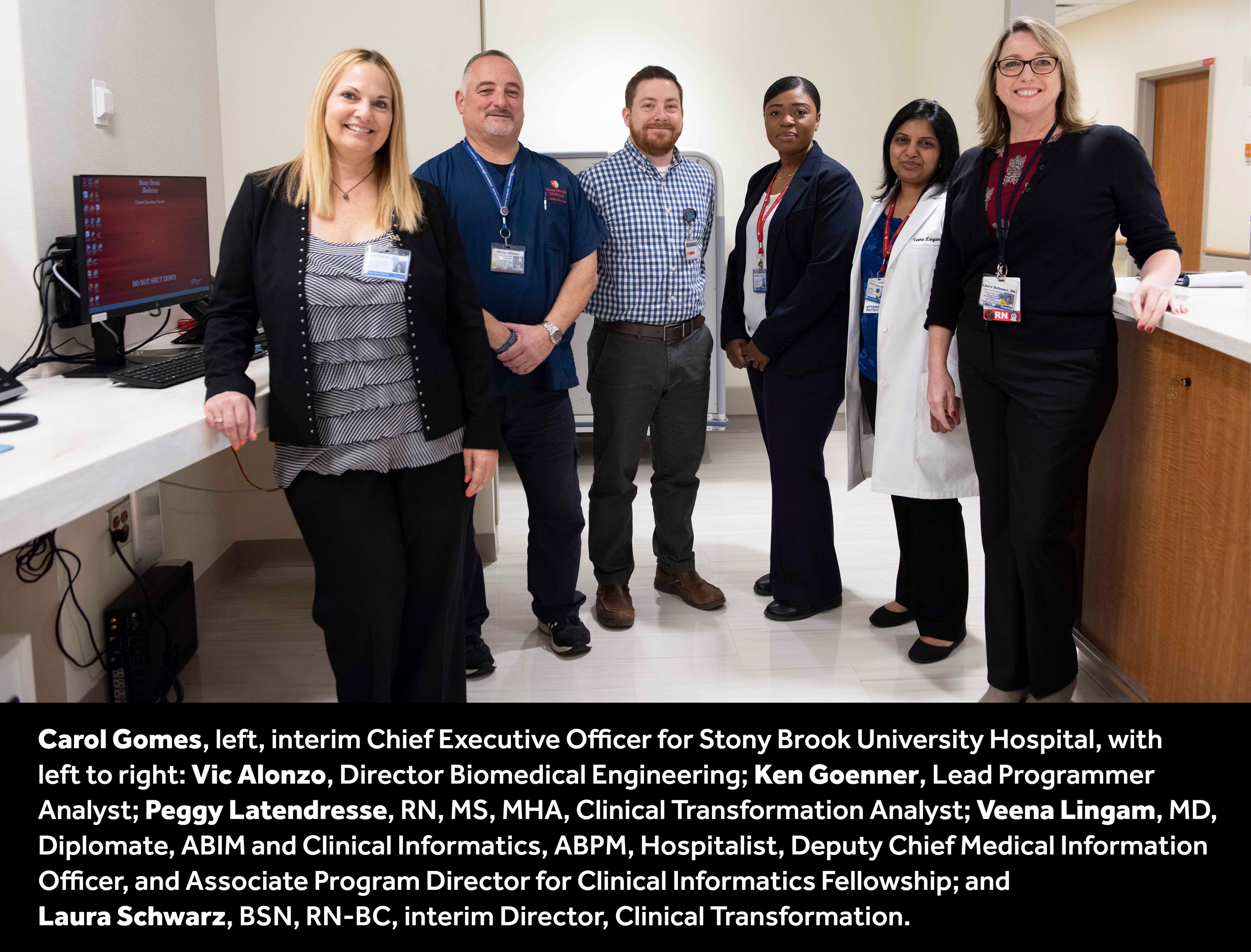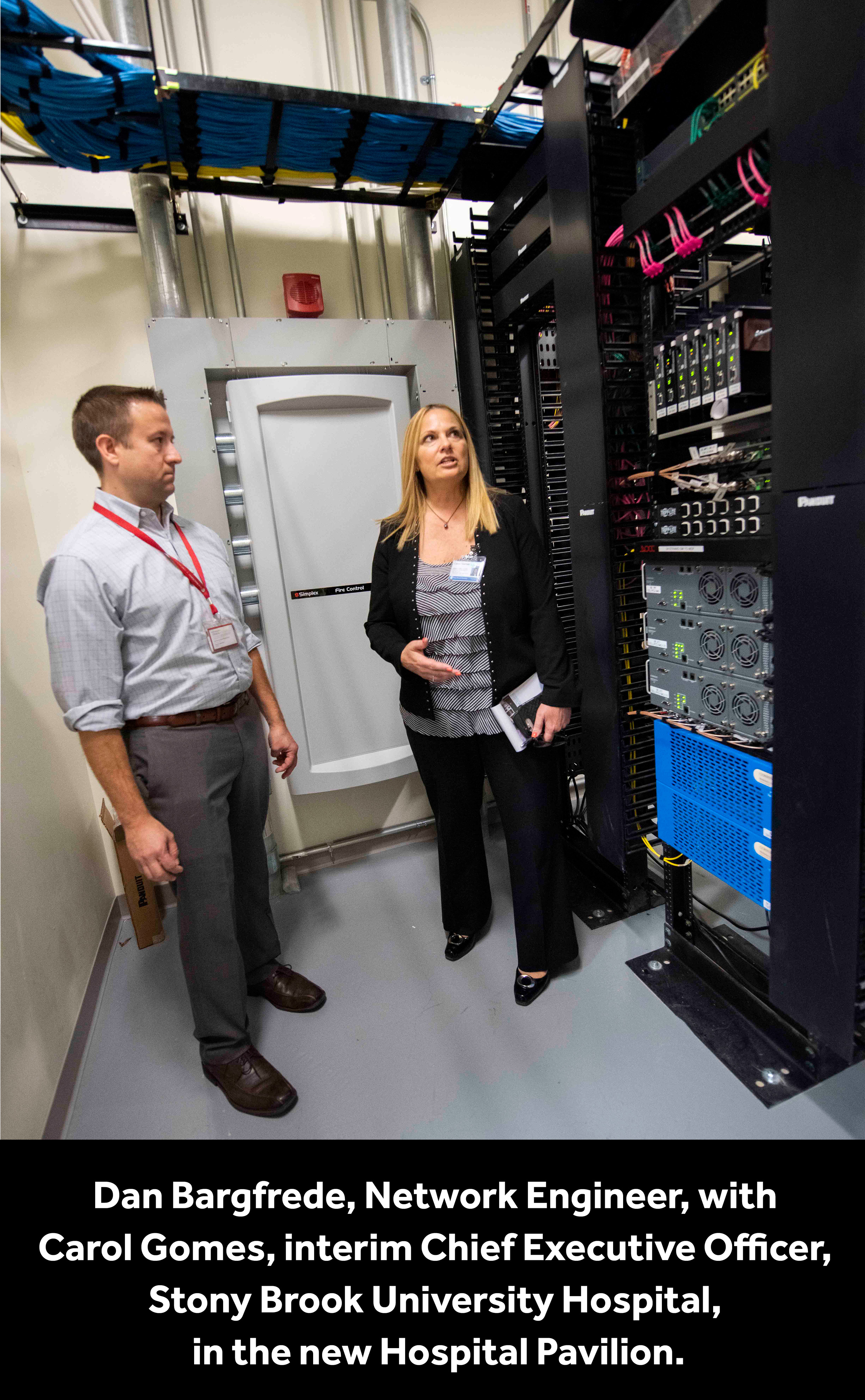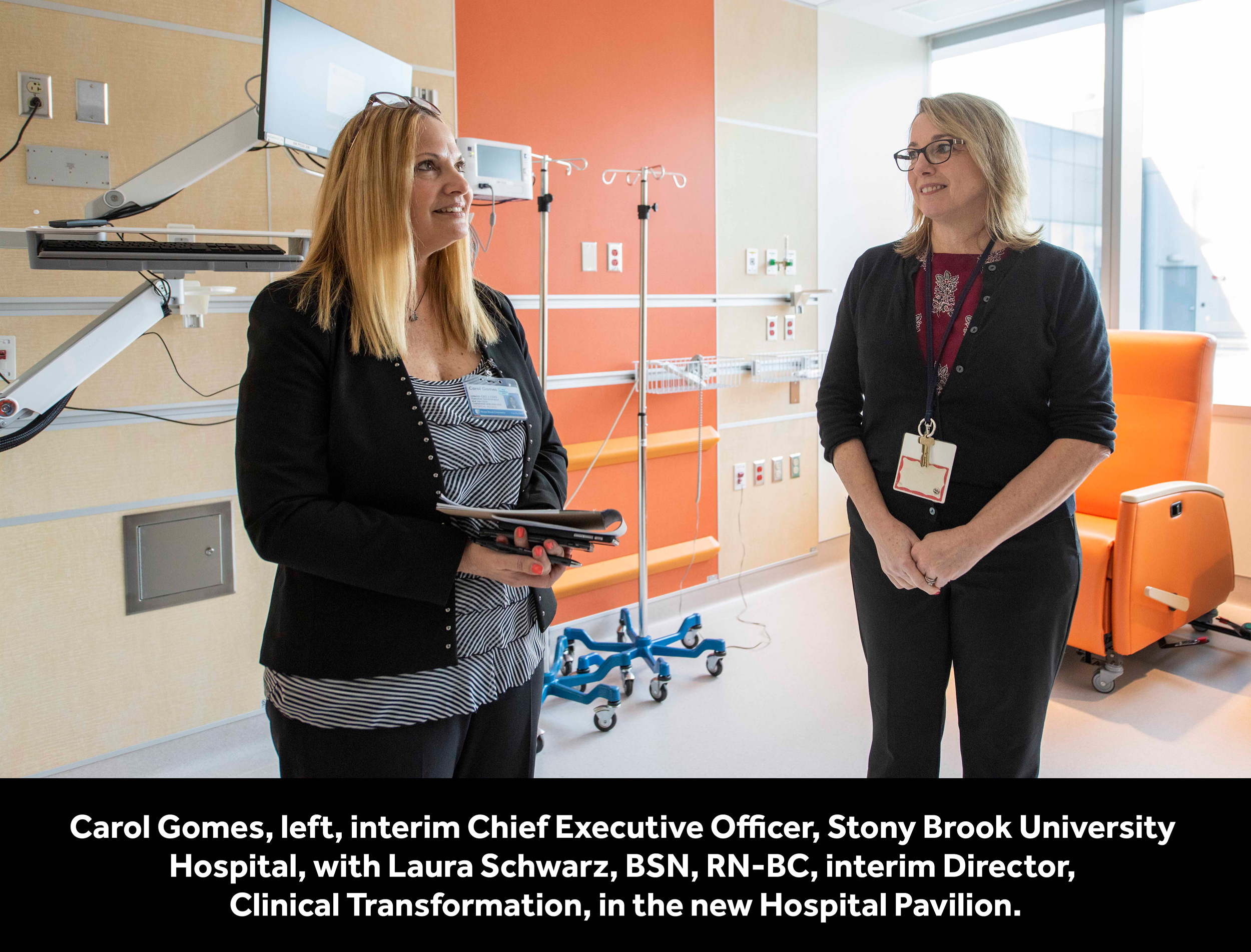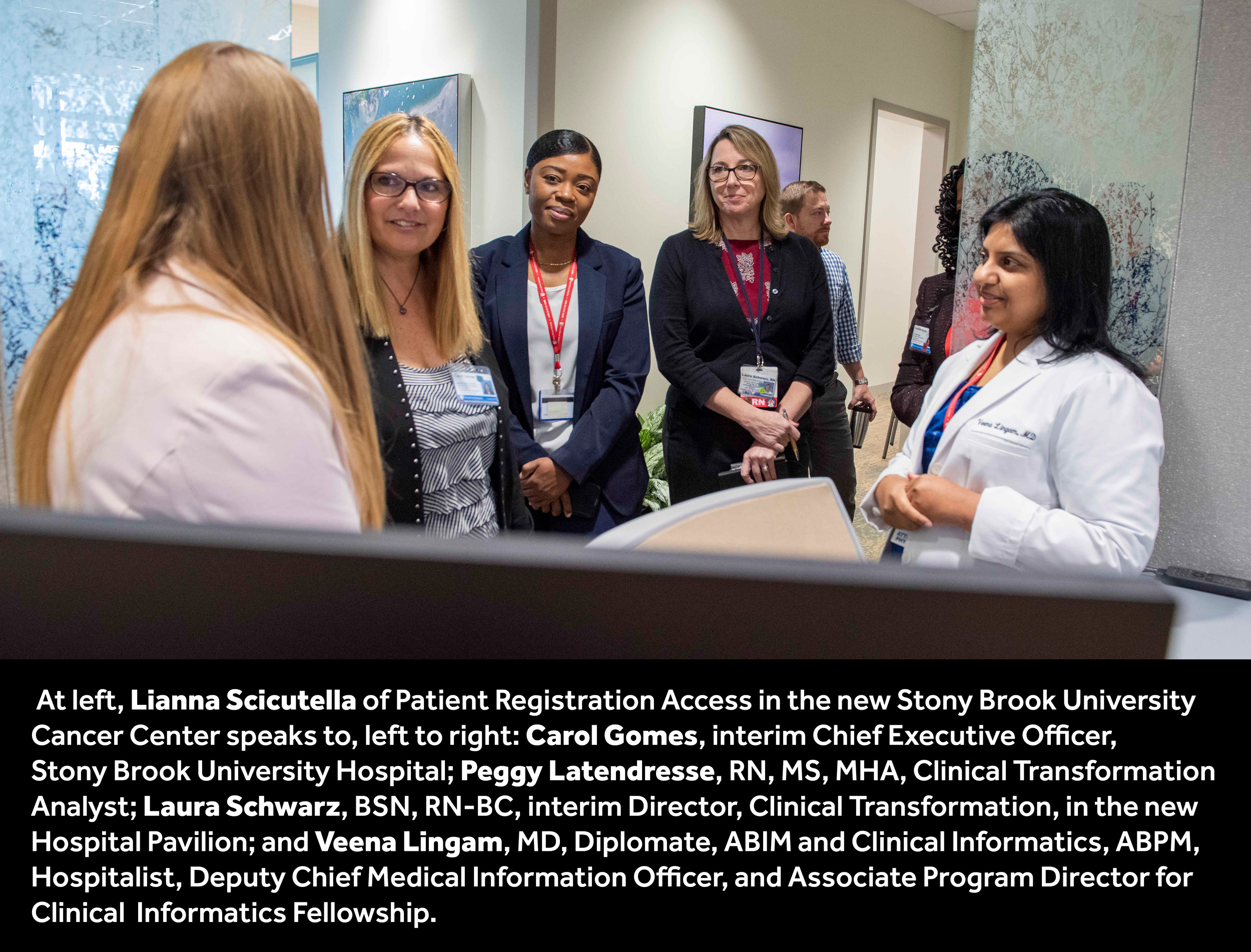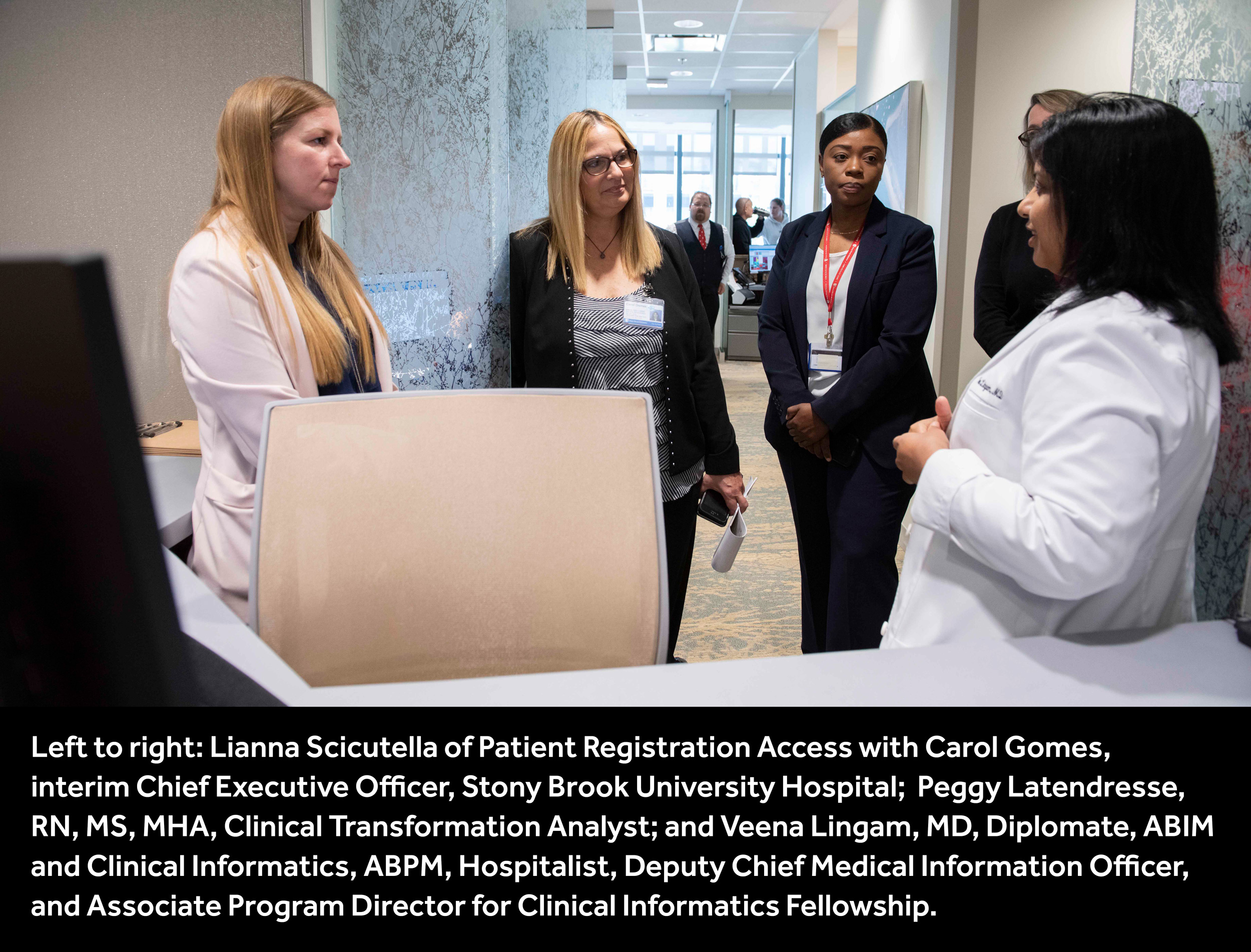Technology has a profound impact on healthcare, and we are witnessing it firsthand in our new Medical and Research Translation (MART) building and the newly opened Stony Brook Children’s Hospital and Hospital Pavilion.
In the spirit of learning more about how our Stony Brook Medicine Information Technology (SBMIT) team contributes to the implementation of new automation at Stony Brook Medicine, I had the opportunity to meet with several staff members who work together to deliver ultimate, state-of-the-art technology to support patient care in a variety of ways.
As the excitement about the opening our new pavilion was building, the Information Technology team took the time to share some highlights that differentiate our new facility from others in the community. Perhaps what was most palpable during the discussion was the level of collaboration and pride exhibited while describing the monumental work that has been implemented in order to achieve the desired results.
Staff from Biomedical Engineering, Clinical Transformation and Networking and Infrastructure described the coordination and teamwork required to deliver new technology which includes an infant security system, the launching of an entirely new telemetry monitoring system, implementation of a real-time location system (RTLS) to track patients working their way through the MART and additional technology including room link monitors, myStation functions, the “Y” configuration, which allows nursing to monitor patients from a computer station that provides line of sight to two patients at once, and an upgraded pneumatic tube system.
Julie Luengas, the Chief Nursing Informatics Officer, noted the importance of tackling nursing and physician workflow with the use of the new technology. “It was extremely important to engage with the clinicians to design and optimize workflow in order to direct the planning process,” Julie said.
Besides the formal “Day in the Life” workflow practice sessions that were coordinated through the Transition Steering Committee, the IT team worked with nursing and physicians to conduct additional “Day in the Life” practice sessions with end users to support the team prior to the go-live date of Nov. 17.
“SBMIT is quite a large and multi-faceted organization especially when you factor in our contingents at SBSH, SBELIH, SBAS, and CPMP,” said Gerald Kelly, DO, Interim Chief Information Officer and Chief Medical Information Officer for Stony Brook Medicine. The SBMIT teams that contributed mightily to the MART/Pavilion project include:
- Technology: Network Services, System Administration, Client Support, Biomedical Engineering, Help Desk, Communications
- Applications: Clinical Applications, Revenue Cycle/Registration, Lab/Radiology/Ancillary Applications, Interface Design
- Transformation: Clinical Transformation, Analytics, Training, Patient Engagement Technologies, Custom Development, Web Teams
- Administrative: Project Management, IT Finance, IT Procurement
- DoIT: Cabling, Security
“Stony Brook Medicine Information Technology is a caring and dedicated group of professionals whose proficiency, devotion, and patient centric focus aligns with the mission and values of Stony Brook Medicine,” Dr. Kelly said. “A place that achieves, excels and never rests on its laurels.”
The team also noted that each new patient room has approximately 10 network connections, which is a significant jump from the one to two connections currently housed in existing rooms. This allows the team to “future-proof” the rooms to ensure that they are SMART-room capable as we strive to implement additional technology, including patient interactive television, Room Link and equipment tracking.
Vic Alonzo’s team from Biomedical Engineering shared the pride involved with contributing toward planning automation for the new buildings, “We will be able to tell our children and our grandchildren that we were able to watch the success of Stony Brook Medicine while directly participating in the planning and implementation process.”
The Networking/Infrastructure team spoke about “the passion in people and passion within the team. We have the ability to help clinicians and ultimately improve patient care. Everyone in IT understands the importance of this role in the context of the healthcare team.”
Dennis Gallagher noted, “As Stony Brook Medicine pushes for the use and implementation of state-of-the-art technology, it is great to know that we have the freedom to evaluate new technology that meets the needs of the organization and our patients.”
Dr. Veena Lingham, Associate Chief Medical Information Officer, noted, “No matter what problem needs to be addressed or new solution that must be implemented, the end goal is that we must leverage technology with the common goal to support our clinicians to provide the best care possible for our patients.”
Walking through the Pavilion with the team, each of the IT team members shared the process steps involved in planning for the new buildings, which involved floor plan reviews, ensuring wireless coverage and network connectivity throughout the buildings, designing rooms with the appropriate equipment placement and carefully evaluating the space before equipment was ordered and installed to solidify smooth workflow processes.
No IT discussion is complete without the opportunity to walk into one of the new network closets. Dan Bargfrede, Network Engineer, who was extremely instrumental on helping to build these wiring closets, offered me a tour of one such closet. There are two spacious network closets on each floor, for a total of 44 in the MART and Pavilion, which is a considerable improvement from the number of IT network closets in our existing towers.
As we made our way into the MART, Lianna Scicutella from Patient Access demonstrated the new patient Smart Tag, which is assigned at registration and can track patients through the appointment process to ensure coordination and continuity for patient flow.
Peggy Latendresse, RN, stated that she wanted to join the IT team due to her previous experience in ambulatory care, as she wanted to build better relationships with end users to provide better care for our patients. Laura Schwarz, RN, shared that she has worked at SBUH for over 30 years and has experienced the amazing growth, which makes her excited to work in an organization that is constantly evolving and innovating to enhance quality and patient safety.
As each team member shared their motivation for coming to work every day, the recurring themes included incredible team work, a passion for what they do and the ability to directly impact and improve patient care. From visiting with the team, it is clear that this close-knit, hardworking and dedicated division takes great pride in the role they play to deliver patient care at Stony Brook Medicine. It was an honor and privilege to meet with the IT team to learn more about their contributions, professionalism and dedication.
Carol


